Burns Into Boons
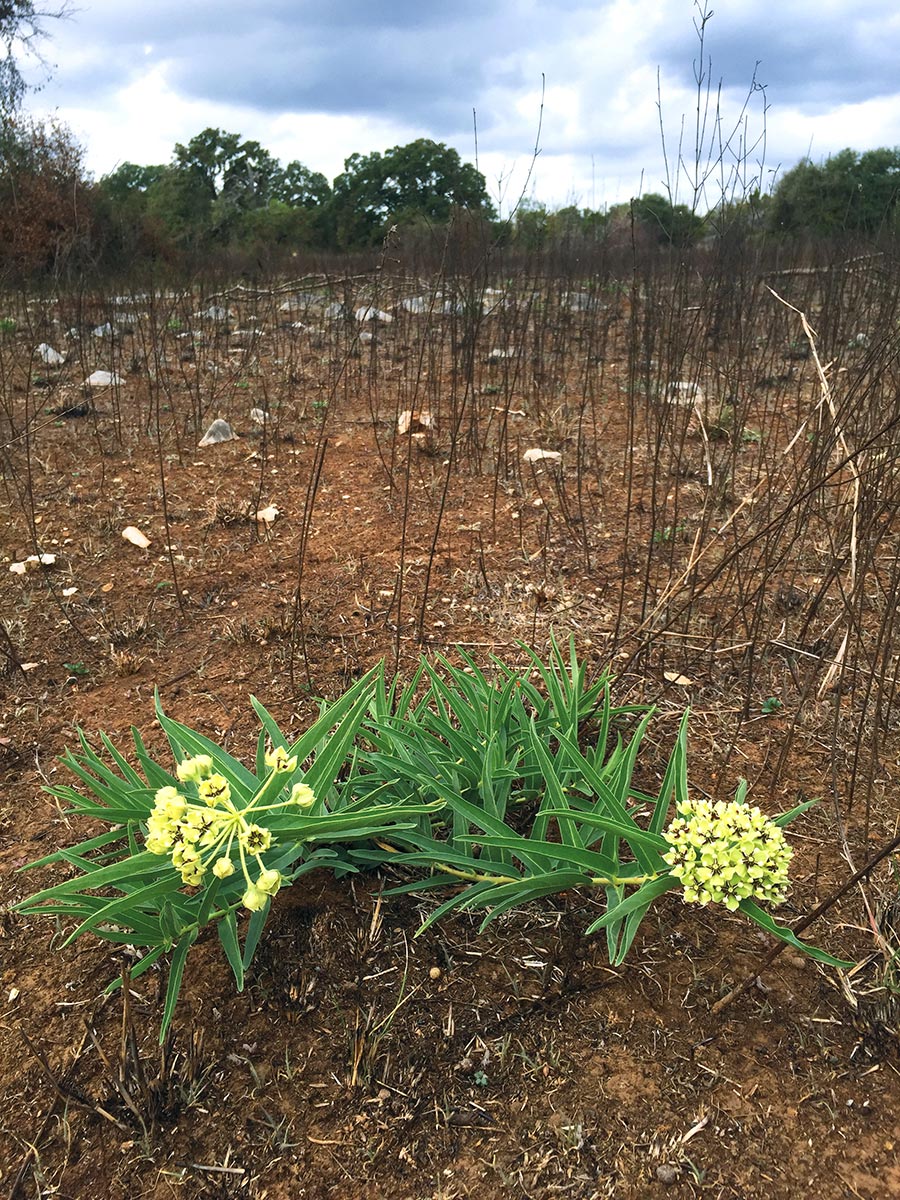
Antelope-horns milkweed (Asclepias asperula) grows after a prescribed burn in a Wildflower Center research plot. PHOTO Lee Clippard
Sometimes, just when you think everything’s gone, you find a way. Like after a prairie fire. … It seems like the end of the world. The earth is scorched and black and everything green is gone. But after the burning the soil is richer, and new things can grow. … People are like that, too, you know. They start over. They find a way. – Celest Ng, “Little Fires Everywhere”
Maybe a hot work of fiction off Reese Witherspoon’s book club list isn’t where you normally turn for botanical knowledge, but it seems like a good time to reflect on rejuvenation, resilience and rising from the ashes. Some native plant species have grown for millennia in wildfire ecosystems and have masterfully adapted to thriving through the flames. Hopefully, we humans can draw some inspiration from this fire-friendly flora — and also better understand why modern prescribed burns are a key conservation tactic in some landscapes.
While it may seem counterintuitive, many species benefit from the fresh start a wild or prescribed fire provides. Biomatter can create a thatch above ground, and when fire sweeps through the “clutter” is cleared. Seeds that are already in the soil can often withstand the heat and are given a chance to germinate if precipitation patterns cooperate. In fact, some are released or stimulated to germinate by the heat or cued by chemical signals from smoke. “When there’s a clear shot at some sunlight and less competition for resources, we can get a little pop of diversity,” says Michelle Bertelsen, a land steward at the Wildflower Center who’s participated in prescribed burn research for 15 years.
Let’s take a closer look at a few native species that have learned to survive and thrive with fire:
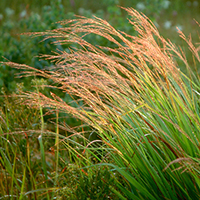
PHOTO Carolyn Fannon
PRAIRIE GRASSES: Root to Rise
Like skyscrapers in cities, we often think growth in plants means going up. While prairie grasses do allot resources for getting taller and putting out seeds, their superpower is focusing energy into establishing deep, reliable roots. Because they’ve evolved in fire ecosystems and also historically experienced occasional grazing from large roaming mammals, grasses are accustomed to having their tops removed, making underground investments a crucial asset. Those deep root systems support intricate webs of subterranean life, filter water, and enrich soil with organic matter, all of which supports aboveground life. The “big four” tallgrass prairie species (in Texas and beyond) are switchgrass (Panicum virgatum, left), Indiangrass (Sorghastrum nutans), big bluestem (Andropogon gerardii) and little bluestem (Schizachyrium scoparium). These significant species thrive when treated with a rolling schedule of prescribed burns.
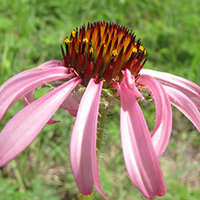
PHOTO Janice Lynn
NARROW-LEAF CONEFLOWER: Fire-born Fecundity
Increased reproduction is a fire-related bonus for narrow-leaf coneflowers (Echinacea angustifolia), which were observed over the course of 20 years as part of the Echinacea Project in Minnesota. Fall and spring prescribed burns caused plants at the study site to produce more blooms, which led to more successfully pollinated flowers. This, in turn, means more seeds and better proliferation of the species over time. The study, published in Proceedings of the National Academy of Sciences, found that fires nearly doubled seed production.
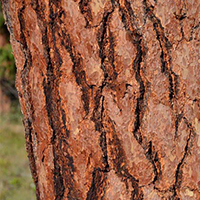
PHOTO James L. Reveal
PONDEROSA PINE: Thick Skin for the Win
For some plants, survival means resilience; for others, it takes resistance. The ponderosa pine (Pinus ponderosa), a large evergreen prominent throughout the mountainous regions of western North America, establishes a deep taproot that can send water and nutrients skyward even if more superficial roots are fire-damaged. As for its grit, the pine is literally thick skinned, with a corky layer that can take the heat as well as chunky, scaly bark that flakes off when aflame. Other favorable facets (as reported by the U.S. Forest Service) include water-stowing needles, the shedding of lower branches (making it harder for fire to climb), and an open crown that may help release heat.
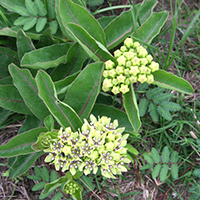
PHOTO Carolyn Fannon
GREEN MILKWEED: Growing a Monarch Nursery
Green milkweed (Asclepias viridis) responded positively to the removal of aboveground plant matter by fire at an Oklahoma study site, according to a paper in Biology Letters. The study compared density of green milkweed in transects that received summer prescribed burns and those that didn’t — and found notably higher density in plots that burned. Because this milkweed is a host plant for monarch butterflies (Danaus plexippus), summer burns could significantly help pre-migrant populations in the Great Plains. Researchers also counted monarch eggs and larvae, finding dramatically higher numbers in burn plots. The post-fire milkweed produced supple new growth, preferred by egg laying butterflies, when the same plants would normally be deteriorating, sans fire

